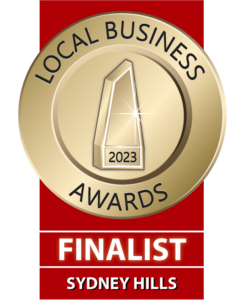As much as there are many ways to properly prune trees, there are also a lot of methods that could negatively affect your trees. To make matters worse, the terms used in tree pruning are technical and can cause confusion. That’s why it’s essential that you know the differences between the terminologies used in pruning to properly address your tree and garden needs.
Tree trimming is the sustainable way of cutting tree portions to improve the overall aesthetic, health, and safety of the surroundings of the tree. On the other hand, tree lopping and tree topping are unhealthy and destructive trimming methods that should be avoided.
Tree Trimming
Tree trimming, also known as pruning, is the general practice of cutting insignificant portions of your tree such as the leaves, buds, small branches and roots. It aims to cut the overgrown, dead, and diseased portions of your tree just above the branch collar located at the point of branch attachment. When done correctly, tree trimming can:
- Improve the overall appearance and shape of your trees.
- Strengthen the health of trees and enrich the yield of fruit-bearing trees.
- Ensure the safety of people and properties around the tree by removing the hazards of branches falling off.
- Prepare parts of your tree for transplanting.
Tree Lopping
Tree lopping and tree topping are unacceptable pruning practices. These terms are often used interchangeably with only a few minor differences.
Tree lopping is an improper prune cutting method wherein the large side branches of a tree are VERTICALLY chopped off. In this technique, branches are indiscriminately cut through or below the branch collar.
Tree Topping
Like lopping, tree topping is also pruning malpractice which involves the HORIZONTAL cutting of the main stems of the tree. This is done through a heading cut wherein you chopped off the topmost portion of the main branch to a bud or to a small lateral branch that doesn’t assume the main growth.
Tree topping significantly reduces the foliage at the upper portion of the tree, consequently reducing the tree’s crown size as well as its height. Tree topping is sometimes referred to as heading, tipping, hat-racking, and rounding over.
Implications of tree lopping and tree topping
The main purpose of lopping and topping trees is to reduce the height and downsize the crown width of trees. This may be because the tree has grown exceedingly than its allotted space.
Because tree lopping and tree topping remove significant portions of the tree’s foliage, these methods severely affect the appearance, health, and safety of trees.
- Lopped and topped trees look unappealing. Moreover, their patterns of regrowth are unbalanced and unsightly.
- Tree lopping and topping remove the tree’s leaf-bearing crown by half or in full. This creates a disparity between the size of the crown and roots of tree which affects food production and storage.
- Trees that are lopped or topped may starve from lack of photosynthesis. They may cope by activating their dormant buds to produce epicormic growths but if they don’t have the energy to do so, they may not survive and die.
- Severe wounds caused by the improper cutting methods subject trees to stress, diseases and infestation. These wounds take long to heal and they weaken the trees’ immunity, causing the bacterial and fungal infections to spread throughout the tree. This can lead to the tree’s deterioration and ultimately, to death.
- Trees may also experience sunburn when the bark tissue is exposed. When this happens, cankers may develop and cause the tree’s external covering to split and crack, eventually leading to branch detachment.
- Epicormic growths are not strongly attached to the bark of the tree so that when these fragile shoots grow bigger and heavier, they are prone to breakage. This can cause damage to properties near the tree and can also lead to injuries or even death to people.
Conclusion
Tree trimming can be done even if you’re not an expert arborist. However, knowing how to properly prune trees is crucial so that you can avoid malpractices such as tree lopping and topping.
If you ever need professional tree pruning services to help you in your tree pruning needs, Trees Down Under is just one call away. Our team at Trees Down Under is equipped with the right tools, experience, and qualifications to maintain your trees as beautiful, safe, and sustainable as they could be. Want us to do the hassle of pruning trees for you?
Give us a call at 0475 463 597 or send us an enquiry here: info@treesdownunder.com.au

